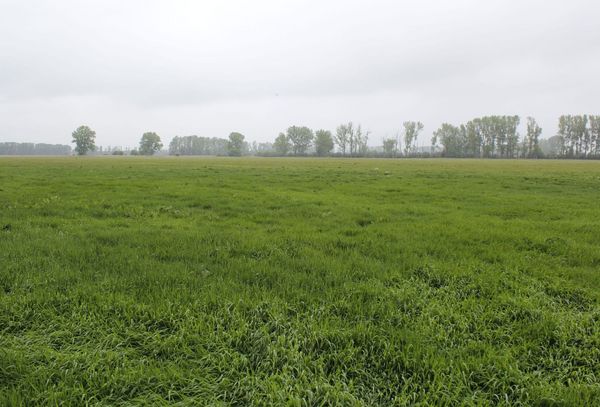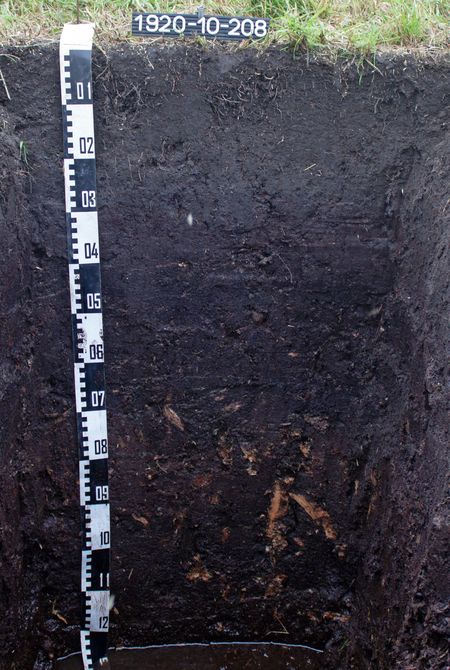Expertise
Climate protection through the rewetting of peatlands – how and at what cost?
Christoph Buschmann, Thomas de Witte, Johannes Wegmann, Bernhard Osterburg | 03.05.2023
Drained peatlands account for a large proportion of the emissions associated with agriculture in Germany. Scientists at the Thünen Institute are determining the costs if conventional drained cultivation is restricted or abandoned and are evaluating low-emission land use alternatives.

Peatlands form the most efficient terrestrial ecosystem for carbon storage. Due to the wet conditions, plant growth exceeds decay and as a result, peat forms, which stores carbon. However, when peatlands are drained, for example for agriculture, they are transformed from carbon sinks to sources of greenhouse gases.
Drained peatlands in Germany are primarily used as grassland for cattle farming and to a lesser extent for arable farming (mainly for fodder production). The emissions correspond to about 7.5% of total German emissions and 44% of emissions from agriculture and agriculturally used soils. Due to the high abatement potential, emissions from peatlands are increasingly in the focus of public attention as well as of German and European policy.
Low-emission alternative land use systems always go along with rewetting, but there are different options as to how much the water level is raised. Peatlands can be completely rewetted, i.e. the water level is just below the ground surface or even beyond. These areas are either renaturated or there are different options for wet use, called "paludiculture". Paludiculture includes, for example, reeds and bulrushes, which can be prospectively refined into building materials such as insulation materials or construction boards. Further information on potential utilisation of paludiculture can be found here.
In addition to complete rewetting, different approaches exist to only partially raise the water level and use the land for example for extensive grazing. For these approach, however, fewer emissions are saved than with complete rewetting. Furthermore, field trials are being conducted to test whether intensive grassland use can be combined with emission mitigation by raising the water level through subsurface irrigation and drainage systems.
Regional factors determine the implementation chances of peatland rewetting
The framework conditions for the conventional agricultural use of peatlands vary from region to region. Decisive factors are, for example, the productivity of the land or management requirements in protected areas. Favourable areas for peatland protection measures are located in regions where the proportion of peatland soil and the productivity of the land are comparatively low. In the research and development project "Fundamentals for the Implementation of a National Peatland Protection Strategy", areas were identified on the basis of economic and other indicators and divided into different levels of implementation potential for rewewtting and mitigation potential. At the European level the CAOS project showed that it is primarily economic factors such as the land rent that determine which land use alternatives are recommendable in which regions. For example, the cultivation of paludiculture or extensive grazing is recommended on land with medium to low productivity. Other factors, such as the heterogeneity of landowners and managers, determine the implementation potential of peatland conservation projects.
Peatland rewetting is comparatively inexpensive as a climate protection measure
One of the main cost factors of peatland rewetting are the opportunity costs,i e. the costs for income foregone because peatlands cannot be conventionally used anymore. With the mathematical simulation models RAUMIS and FARMIS, scientists at the Thünen Institute estimated the opportunity costs of peatland rewetting at the aggregate level (district, federal state, agricultural sector) and compared them with the costs of other climate protection options in agriculture. The results show that the costs per tonne of mitigated emission are lowest for peatland rewetting.
The projects CAOS and BEWAMO showed that the range of possible opportunity costs is significantly higher if they are not determined at the aggregate level but if individual farms are considered. The range depends, among other things, on how well farms can adapt to the loss of peatland.
This work is to be continued in the RoVer project by including new land use options such as open space PV on rewetted peatlands and paludiculture. Results are to be scaled up so that different implementation scenarios of peatland rewetting can be economically evaluated not only at farm level but also for example at federal state level.







